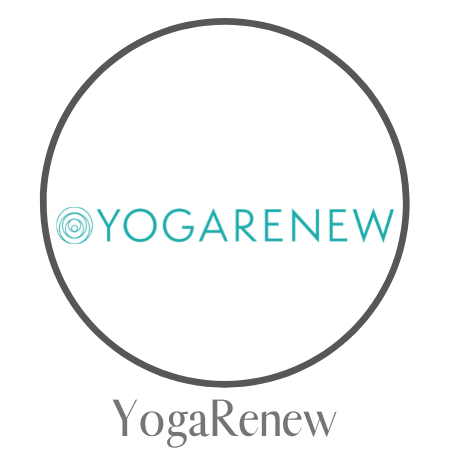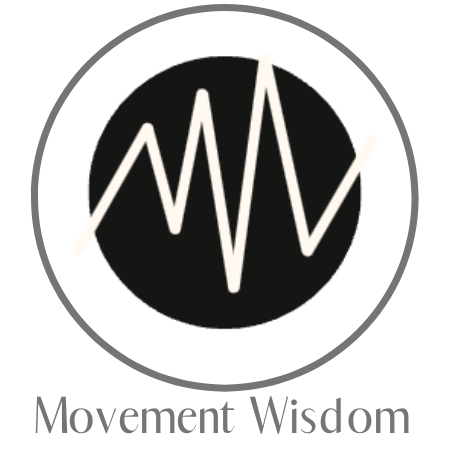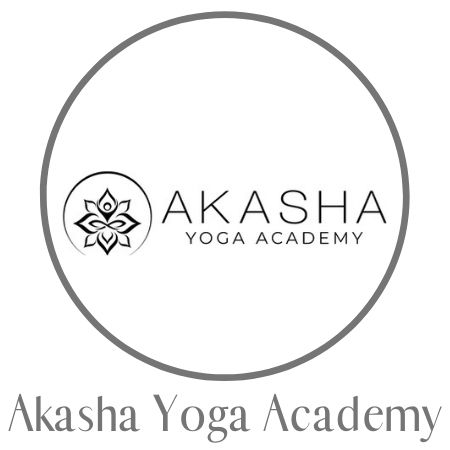Do you feel the calling to take your yoga practice to the next level? If so, this guide to how to become a RYT-200 yoga instructor is just what you need!
I had been practicing yoga for several years before enrolling in yoga teacher training. Although my life had changed multiple times throughout that time, yoga remained my bedrock. As a result, I started getting curious about how to become a yoga instructor, researching the ins and outs of yoga teacher training.
If you're curious to learn more about the basic 200-hour YTT and what it involves, light some incense, center your mind, and read on as I share everything you need to know about how to become a certified yoga teacher at the 200-hour level and what this foundational level of yoga teacher training involves.
Article content:
(Click any link below to jump directly to section)
What is YTT 200 (200-hour yoga teacher training)
Training curriculum
Training requirements
Course formats for 200-hr YTT
Cost of 200-hour yoga teacher certification courses
Final exam process for 200-hour yoga certification programs
Continuing education requirements for yoga teachers
Takeaway on becoming a 200-hour yoga instructor
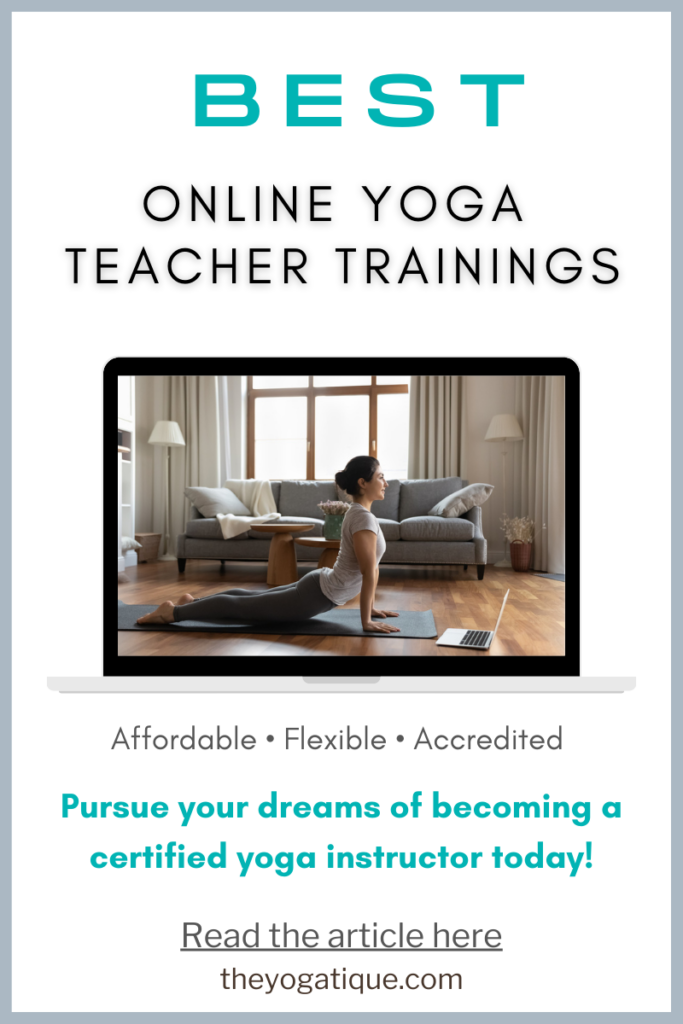
IS YOGA TEACHER TRAINING ON YOUR RADAR?
Online Yoga Teacher Training Offers
- Affordability
- Flexibility
- Certification
- Lifetime access
⬇Click below to discover the best Yoga Alliance registered online YTT's to join now ⬇
What is YTT 200? (200-hour yoga teacher training)
A 200-hour yoga teacher training is the foundational yoga teacher training comprised of 200 hours of studying theory, asana practice, hands-on teaching practice, philosophy, and elective hours. It’s a blend; it’s not just 200 hours of reading about yoga history and philosophy.
Yoga teacher training programs cover various subjects, including theory and practical application. They also include both written and practical exams. Foundational toga teacher training includes the study of:
- Yoga asana (postures)
- Pranayama (breathing techniques)
- Meditation and yogic lifestyle
- Yoga philosophy and the yoga sutras
- Anatomy and alignment
- Teaching methodology
200-hour training curriculum
Every Yoga Alliance registered yoga school must include all five of the following modules in their course curriculum:
- Techniques, Training, and Practice – This includes asana, pranayama, kriyas, mantras, meditation, and other traditional yogic techniques. The delivery of these subjects will consist of analytical training (such as asana labs) and guided yoga practice (similar to a regular yoga or meditation class).
- Teaching Methodology – This includes the principles of demonstration, observation, assisting, and correcting when teaching. It also covers communication skills and different teaching styles. This module may also teach about the business side of yoga.
- Anatomy and Physiology – This includes physical anatomy, like the bodily systems, and energy anatomy, like the Chakras and Nadis.
- Yoga Philosophy, Lifestyle, and Ethics for Yoga Teachers – This module includes the study of traditional yogic texts. It also includes how yogic concepts can apply to your lifestyle and the ethical guidelines to follow.
- Practice teaching – This includes leading yoga classes, observing others teaching yoga, and assisting students while someone else teaches.
200-hr training requirements
A 200-hour yoga teacher training is the basic training for certified yoga instructors. 200 hours is the minimum amount of training hours you must complete to become a Registered Yoga Teacher and begin your teaching career.
However, a 200-hour YTT is just the tip of the iceberg. While you will learn so much that your head feels like it will explode, if you're serious about teaching yoga, you shouldn't stop there.
This is what's covered in a 200-hr yoga teacher training course:
- Teaching, technique, training & practice (75 hours)
- Anatomy & physiology (30 hours)
- Yoga humanities (30 hours)
- Professional essentials (50 hours)
- Elective hours (15 hours)
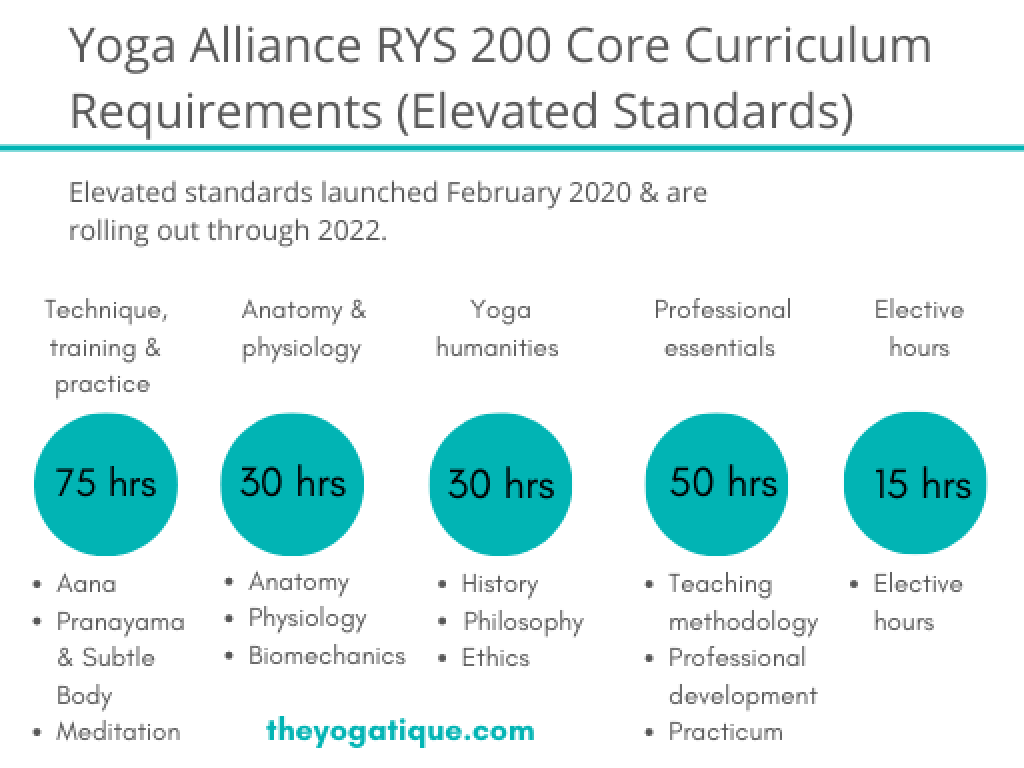
⬇These are some yoga teacher trainings you should look into⬇
Course formats for 200-hr YTT
Yoga teacher training is available in various formats to accommodate diverse lifestyles and learning preferences. The three main types of training formats are:
- Intensive training
- Part-time training
- Online training
1. Intensive training (retreat style)
Intensive 200-hour yoga teacher training courses typically run for 3 to 5 weeks. In an intensive course, you will study six days a week (up to 12 hours daily!). While it is physically and mentally challenging, this is a fab option if you want to gain your yoga instructor certification quickly!
2. Part-time training (weekends & evenings)
Part-time certification courses are much more chill, as you study for one or two days a week (typically on the weekend or in the evenings). However, with this learning style, it can take up to 1 year to reach the 200 hours required for your yoga teacher certification.
3. Online training (virtual)
Many online training programs have a flexible duration, allowing you to complete the training in a timeframe that suits you. With a 200-hour online course, you could become a certified yoga instructor in as little as one month or as long as 1+ year.
Cost of 200-hour yoga teacher certification courses
200-hour yoga teacher training online starts at $347 for affordable online training and goes up to $3,000 for in-person intensive retreat-style training in Bali or Thailand.
Final exam process for 200-hour yoga certification programs
To get certified, you will need to complete all of the coursework in your YTT and pass a final exam.
The final exam is twofold. It includes a written or multiple-choice test and a practical portion where you demonstrate all of the teaching skills you learned in your training.
You will upload your practice teaching video if you’re taking an online course. For in-person training, you will perform your practicum in-person.
Once you have your teaching certificate, you can register with Yoga Alliance online. The online process is very simple.
Continuing education requirements for yoga teachers
Continuing education is required if you register as a Yoga Alliance RYT-200. As a registered yoga teacher, you must complete 75 hours of CE every three years. However, this includes showing proof of 45 hours of teaching yoga, so only 30 hours of yoga training are required.
7 common types of Continuing Education courses:
- Yin
- Restorative
- Prenatal
- Children's
- Mindfulness
- Chair yoga
- Philosophy

Takeaway on becoming a 200-hour yoga instructor
Understanding the training requirements for yoga teachers will help you choose the right course. Becoming a yoga instructor is a transformative journey that combines dedication, learning, and passion. Whether you aim to teach or deepen your personal practice, completing a 200-hour yoga teacher training is a meaningful first step. With numerous formats and programs available, there’s a path that aligns with your lifestyle and goals.
Are you ready to enroll but not sure how to prepare or what to bring?! We have an entire library of articles to get you ready for yoga teacher training!
Some online yoga studios, online yoga teacher training programs, and brands that we write about may offer us a small percentage should you decide to purchase after reading our content. Thank you for enabling us to exist!


